FALL AND THE PHYSICS OF LEAVES
My tree looks austere now.
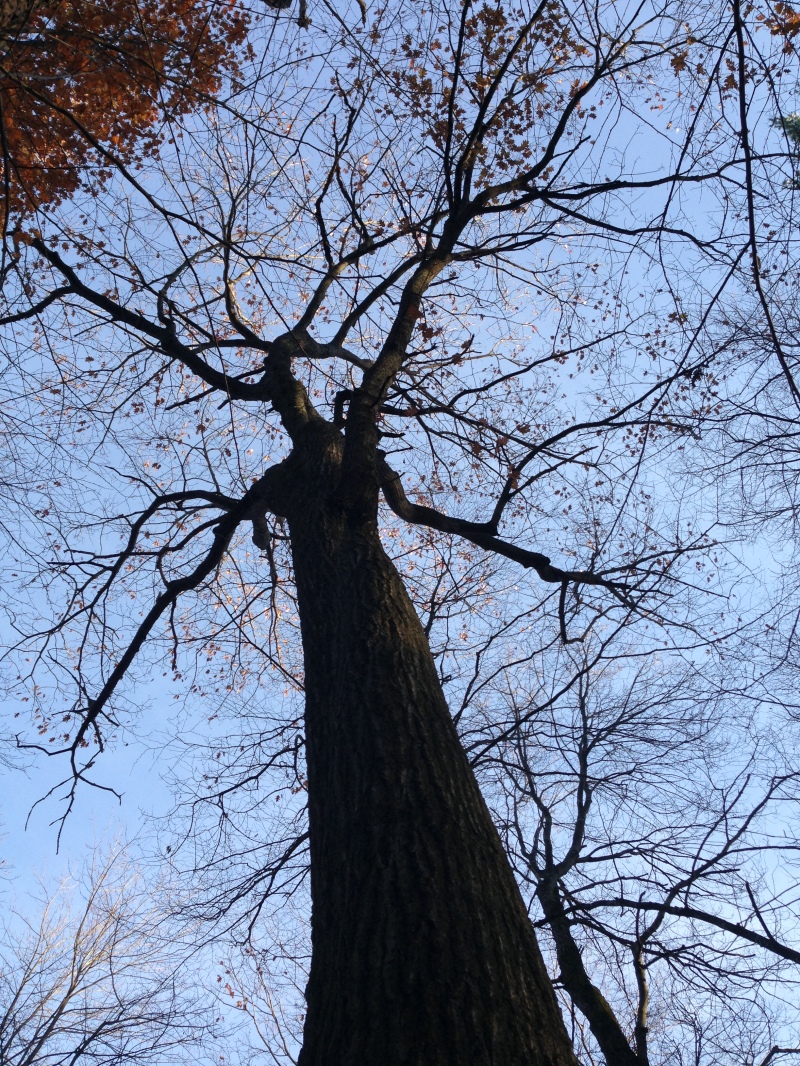
BT QURU 03 has lost nearly all of its leaves. Yet it kept them longer than nearly all the other trees. How do oaks do that?
Gone is the soft light pouring down like a blessing amid its green leaves of spring, tiny and new, and just starting to grow against a tender blue sky. Gone too is their deep green splendor that only comes in the full leaf of summer. How distant all of that feels now.
Today at the Harvard Forest, where I am observing the life of one oak for my forthcoming book, Witness Tree, steel wool clouds scud and the wind scrapes the oak’s branches clean. Its last leaves talk among themselves perhaps of the year past. Most now are at my feet, a nut-brown cascade, superb in their fallen, abundant glory. I rustle them with my feet just to hear them, and snug my fingers into the deepening duff.
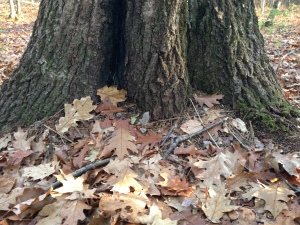
Leaves have piled up thickly at the flared base of BT QURU 03. Just fallen, and still lovely and lustrous now, they will crisp, curl and crumble before long.
I look around and see only the beeches and oaks still with leaves now, the black birches, striped maples, paper birch and red maple mostly bare. I wondered, when a recent storm front lashed at the forest with gusts above 30 miles per hour, if there would be any leaves left on the big oak at all.
It’s no accident that there are, of course. It’s the result of elegant physics, in which the leaves roll and cluster, the better to withstand the drag force of the wind, says Steven Vogel, author of the book The Life of a Leaf (University of Chicago Press, 2012) and professor emeritus of biology at Duke University.
He’s not a botanist, but rather a scientist who wanted to examine the physics of everyday life, using the leaf as a protagonist. Hence his book, which probes the marvelous mechanics of leaves.
This all started, as it so often seems to in science, with fruit flies. Vogel early in his career built a low-speed wind tunnel to study their flight mechanics, but quickly grew tired of that. “They got me my PhD, but trying to fly fruit flies in a wind tunnel with little wires on them is a way of getting old fast,” Vogel said. It was time for a new line of inquiry.
“I was casting about for a system that was a little more tractable, that would be fun experimentally, and I thought, well, what about a leaf?”
There is a lot of wonderful physics involved in a leaf doing what it has to do, Vogel learned. Getting water, making food, all with no moving parts or sound, or barely. “Making a big broad leaf like you have on an oak, it’s a pretty remarkable thing,” Vogel said.
In the 1960s, he became interested in how leaves avoid overheating in hot sun, when air movement drops to almost zero. This was low-speed fluid mechanics research, Vogel said, “without the really hair raising complication of flapping flight.”
The variation of leaf shapes on a single tree, he discovered, was the key to their heat endurance. “A leaf not in the sun can afford to have a nice broad blade, whereas a leaf in the south side or the top has to worry about overheating.” A smaller leave blade, with deep scalloping allows no part of the leaf to be very far from the edge, allowing for better heat transfer, Vogel said. “You want a lot of edge, and not a lot of blade far from the edge.”
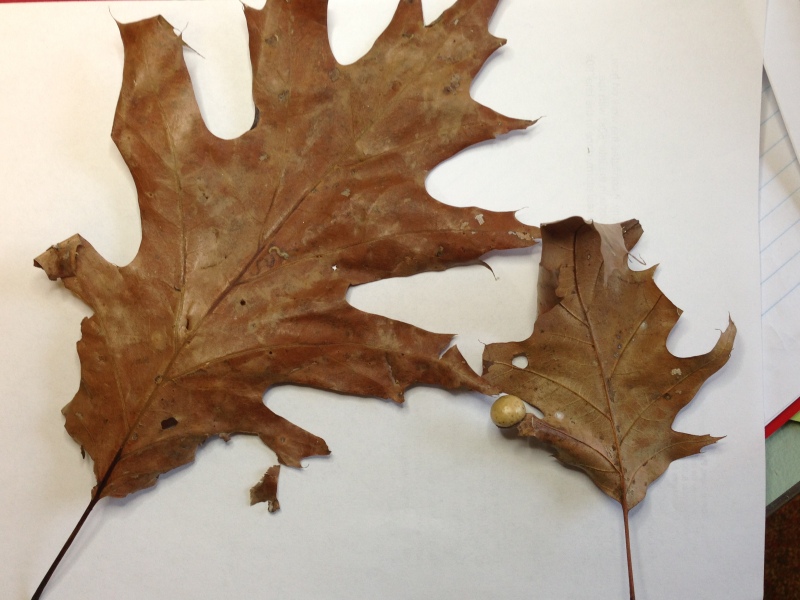
Sun and shade leaves are very different size and shape on the same tree, to beat the heat. The leaf on the left is a shade leaf, the one on the right a sun leaf. Notice the gall it carries too.
Oaks were the first trees he worked with to explore sun and shade leaf differences – and he found spectacular variation in the shape and size of the leaves. The small, deeply scalloped sun leaves on my tree are an adaptation to deal with hot sun, with leaf temperatures getting up to above 100 degrees. “You can make yogurt at 120 degrees,” Vogel said. “You are at the upper edge of what proteins will do.”
Putting leaves in a wind tunnel during some of his research in the 1980s and 1990s for Vogel opened more discoveries about the mechanics of leaves. “They did all kinds of wonderful things,” Vogel said. “They rolled up into cones, they curled, and clustered. No one had ever looked at what a leaf does in a potentially destructive wind in terms of the mechanics.”
The fact that oak leaves stay on long past the leaves of other trees doesn’t surprise him. “The how is easy enough, you build enough cellulose as the base material, and you can do anything,” Vogel said. “But the why is interesting.” As to that, he figures retaining some leaves late in the season may be an adaptation of the tree to protect itself from the cold. “If you keep a few leaves around you don’t radiate to the cold sky. You are mechanically more vulnerable, but you are temperature-wise less vulnerable.”
But eventually, even the oaks will go bare. Today John O’Keefe, field phenologist of the Harvard Forest and I walked his tree survey, to investigate how autumn is progressing.
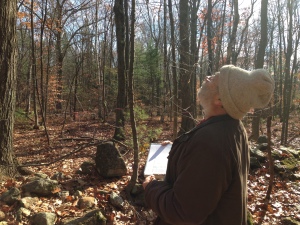
Taking a look at BT QURU 03’s canopy. John estimated it has dropped more than 90 percent of its leaves by now.
He estimated about 93 percent of the big oak’s leaves had dropped. A few leaves still clung to its canopy, a tattered scarf left behind after a long summer’s party. Of the 75 trees in his survey, only two still had more than half their leaves. One was an oak, the other a beech (both of which are in the same family.)
All the others were mostly bare, ready for winter.

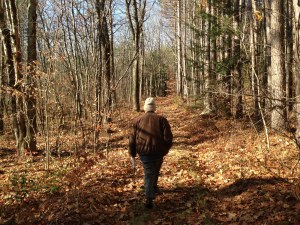
Great blog, Lynda. Interesting, well-written (you loved throwing around that descriptive language at the beginning, I’ll bet), and seasonal. I’ll look forward to many more.